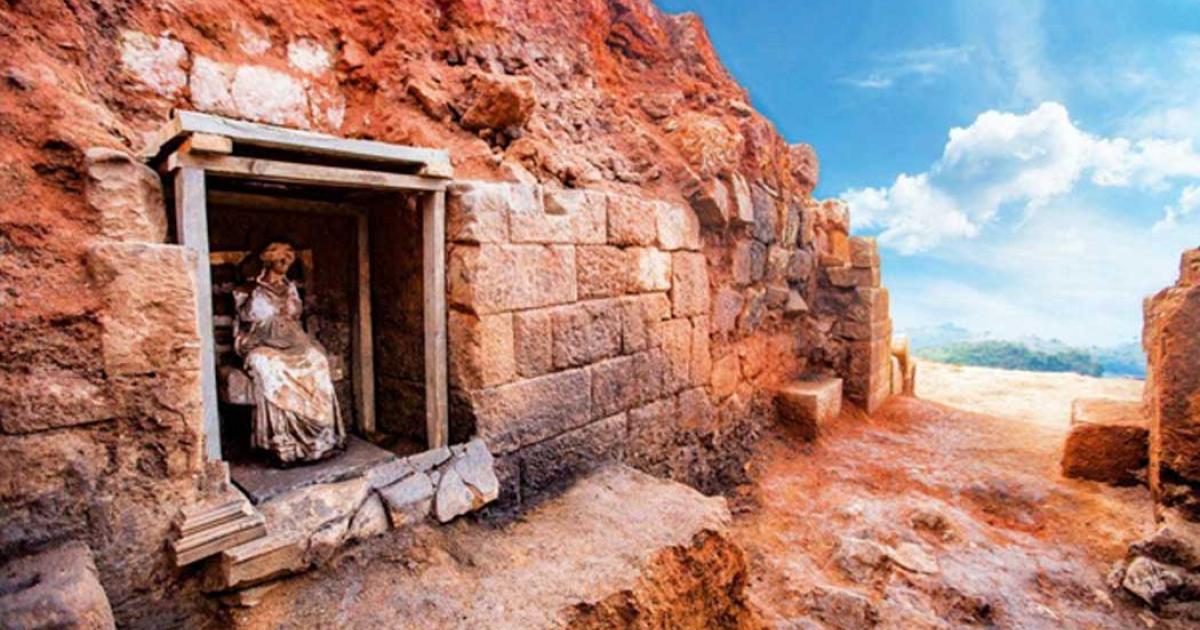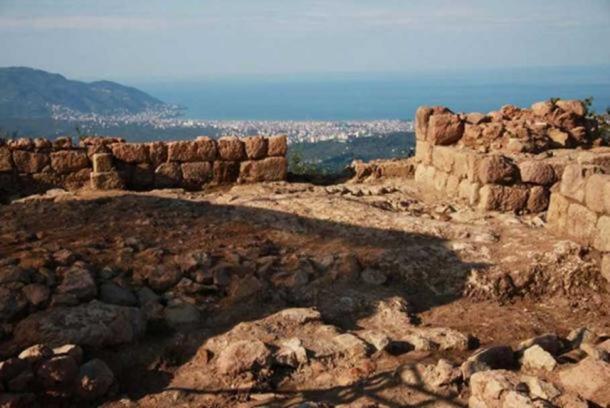
Ancient Castle in Turkey Remains Threatened by Dynamite Blasts
Commodities versus conservation – yet again the debate is playing out. This time the site of interest is the ruins of an ancient castle in Turkey; where dynamite may shake a unique mother goddess statue and the rest of the remains out of existence.
Although the focus of the concern has been the castle, other archaeologically significant locations nearby, such as rock tombs, have already fallen to the dynamite’s blasts. There is a deep-seated worry that the castle remains will also fall due to the quakes from the explosions. Local environmentalists have called out for help by telling Hurriyet Daily News,
“We don’t know who to complain to, or what to do. Every day, those responsible for the stone quarry destroy the historic castle’s foothills with dynamites. We are anxiously waiting to see if the castle will crumble.”
- Quarrying and Blasting May Destroy 2100-Year-Old Castle Site and Statue of Mother Goddess in Turkey
- The Mother of all Gods: The Phrygian Cybele
When museum authorities were spoken to, it appears they have taken a hands-off approach, after a long fought legal negotiation to save the castle, stating, “The stone quarry is not on an archaeological site, we cannot intervene.”
One of the most prominent features of the site is a marble statue of the Phrygian goddess Kybele (Cybele), which was discovered only two years ago. As Ancient Origins reported in 2017, “When the discovery of the statue of Cybele was made known to the world, about 15,000 people visited the castle to see it.”

The 2,100-year-old marble sculpture of Kybele at the site of the ancient castle in Turkey. (Greek Reporter)
Riley Winters has explained the significance of Cybele as:
“the primary mother goddess of ancient Anatolia, and Phrygia's only known goddess thus far. She was a "Mistress of Animals", "Great Mother" and "Mother of the Mountain" and it appears that Cybele was adopted by the Greeks in Asia Minor (modern day Turkey), and then adapted as she spread from there to mainland Greece, followed by Rome […] there are numerous statues of overweight, seated women that archaeologists believe represent Cybele. Often, she is also portrayed giving birth, indicative of her Mother Goddess status.”

Figurine of a seated Mother Goddess flanked by two lionesses found at Çatalhöyük, Turkey (about 6000-5500 BC), Museum of Anatolian Civilizations in Ankara. ( CC BY SA 2.5 ) Many say this is one of the earliest representations of Cybele.
Kurul Castle, where the Cybele statue is located, was built during the reign of King Mithridates VI of Armenia Minor and Pontus, which spanned from 120 to 63 BC. Ancient Origins has reported that this king is “best known for his conflict with the Roman Republic in the three Mithridatic Wars, in which the Pontic king fought against three prominent Roman generals – Lucius Cornelius Sulla, Lucius Licinius Lucullus, and Gnaeus Pompey Magnus.” He is commonly called “the Poison king” because he “apparently consumed various types of poison in small doses in order to develop immunity against them, should an assassin attempt to kill him by this means.”

An image depicting Mithridates VI giving poison to a prisoner. (CC BY NC ND 3.0)
Returning to current events at Kurul Castle, those in favor of the andesite quarry in the area have been battling it out in court against their opponents for years.
- 3,000-Year-Old Castle Built by Mysterious Civilization Found at The Bottom of a Lake in Turkey
- Long hidden Iron Age castle revealed in 3,000-year-old ruins in Van Province, Turkey
Hurriyet Daily News provides an overview of the back and forth as follows:
- 1996, the Samsun Cultural and Natural Heritage Preservation Board named the ancient castle a first-degree archaeological and natural site - cancelling a license for the quarry already open at the site.
- 2011, the quarry operators, Kırca Engineering, claimed the quarry and castle are on separate rock masses and asked in a claim filed at the Ordu Administrative Court for the amount of protected land to be reduced. An expert report said the quarry could destroy the archaeological features, however the Ordu Museum conceded the quarry area could be exempt from the protected area; the case finished on the side of Kırca Engineering.
- The Culture and Tourism Ministry appealed the court decision and the Council of State reversed the court’s decision, stating the quarry would harm the region and was “in a first-degree archaeological site.”
- 2017, fear of destruction brings the case to international media and an Ordu court ruled that no quarry could be made near Kurul Castle
- 2018, dynamite continues to blast away at the castle’s foothills

Kurul Rock archaeological site, Ordu, Turkey. ( Black Sea-silk Road Corridor )
Top Image: The 2,100-year-old marble mother goddess sculpture of Kybele is still under threat at the ancient castle in Turkey near the Black Sea. Source: Hurriyet Daily News
















Comments
How can Turkey with its recent history only be called ancient?